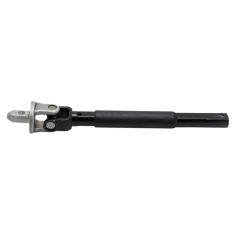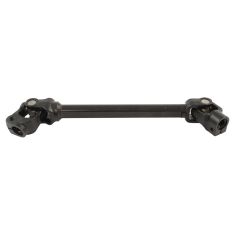Steering Shafts & Couplers
-
-
- Air Deflectors & Valance Panels
- Battery Trays & Related
- Body Panels
- Bumpers & Related - Front & Rear
- Convertible Tops, Soft Tops, & Parts
- Decal & Stripe Kits
- Emblems & Nameplates
- Engine Compartment Trim
- Frame Parts & Bushings
- Fuel Door Parts
- Fuel Tank Filler Neck
- Grille
- Header Panel
- Hood & Hatch Lift Supports
- Hood Latch & Catch Brackets
- Hood Release Cable
- Jack Pads
- Radiator Supports
- Rust Repair Panels
- Splash Shields & Fender Liners
- Tailgate Cables
- Tailgate Hinges & Related
- Weatherstripping
-
- Exterior Lighting
- Exterior Parts & Accessories
- Fender Flares
- License Plate Brackets & Frames
- Mud Flaps & Splash Guards
- Nerf Bars, Side Steps, Running Boards
- Radio Antenna
- Rain Deflectors
- Roll Bars, Light Bars, & Related
- Skid Plates
- Spare Tire Carriers & Related
- Tonneau Covers
- Tow Hooks & D-Shackles
- Trailer Hitch & Components
-
- Accelerator Pedals & Sensors
- Cruise Control Switch & Lever
- Electrical Parts
- Hazard Switch
- Ignition Key Lock Cylinder
- Ignition Switch
- Keyless Entry Remote & Related
- Neutral Safety Switch
- Parking Assist Cameras & Monitors
- Power Mirror Switch
- Power Seat Switches
- Power Window Switch
- Radio, Navigation, Entertainment
- Reverse Light Switch
- Trunk Release & Lock Solenoids
- Turn Signal Switches and Levers
- Windshield Wiper Switch
-
- Idler Arm
- Pitman Arm
- Power Steering Hoses
- Power Steering Pressure Sensor
- Power Steering Pump
- Power Steering Pump Pulley
- Power Steering Pump Reservoir
- Steering Dampers
- Steering Knuckles and Spindles
- Steering Rack and Gear Boxes
- Steering Shafts & Couplers
- Steering Wheels & Column Parts
- Tie Rods & Adjusting Sleeves
-
-
-
27
3
10
10
-
Notify When Available
Replaces Chevrolet GMC Cadillac Hummer Upper Intermediate Intermediate Steering Shaft TRQ PSA67600
Brand: TRQ- PSA67600$74.95Save 29%List $105.95 Save $31.00Brand: TRQ - PSA67600$74.95Save 29%List $105.95 Save $31.00 -
Notify When Available
Replaces Chevrolet GMC Cadillac Intermediate Steering Shaft with Coupler 3 Piece Set TRQ PSA50716
Brand: TRQ- PSA50716$149.95Save 24%List $197.95 Save $48.00Brand: TRQ - PSA50716$149.95Save 24%List $197.95 Save $48.00 -
Notify When Available$99.95Save 23%List $129.95 Save $30.00Brand: TRQ - PSA67599$99.95Save 23%List $129.95 Save $30.00
-
Notify When Available
Replaces Chevrolet GMC Cadillac Intermediate Intermediate Steering Shaft TRQ PSA71570
Brand: TRQ- PSA71570$84.95Save 19%List $104.95 Save $20.00Brand: TRQ - PSA71570$84.95Save 19%List $104.95 Save $20.00 -
Notify When Available
Replaces Toyota Rav4 Upper Intermediate Intermediate Steering Shaft TRQ PSA67602
Brand: TRQ- PSA67602$79.95Save 21%List $100.95 Save $21.00Brand: TRQ - PSA67602$79.95Save 21%List $100.95 Save $21.00 -
Notify When Available$84.95Save 29%List $119.95 Save $35.00Brand: TRQ - PSA67598$84.95Save 29%List $119.95 Save $35.00
-
Notify When Available$78.95Save 41%List $132.95 Save $54.00Brand: TRQ - PSA67603$78.95Save 41%List $132.95 Save $54.00
-
Notify When Available
Replaces 2005-15 Toyota Tacoma 4 Wheel Drive Lower Intermediate Steering Shaft TRQ PSA67601
Brand: TRQ- PSA67601$84.95Save 25%List $112.95 Save $28.00Brand: TRQ - PSA67601$84.95Save 25%List $112.95 Save $28.00 -
Notify When Available
Replaces Chevrolet Buick Pontiac Olds Intermediate Steering Shaft TRQ PSA71580
Brand: TRQ- PSA71580$109.95Save 27%List $149.95 Save $40.00Brand: TRQ - PSA71580$109.95Save 27%List $149.95 Save $40.00 -
Notify When Available$33.95Save 29%List $47.95 Save $14.00Brand: TRQ - PSA87146$33.95Save 29%List $47.95 Save $14.00
loading...
Choose the Make of Your Vehicle










